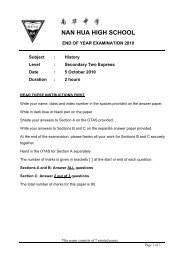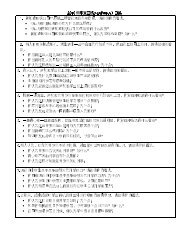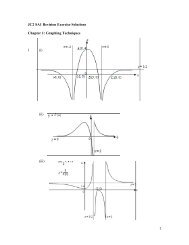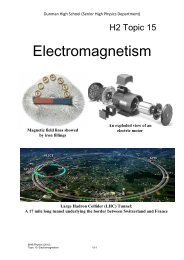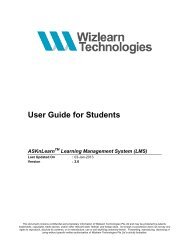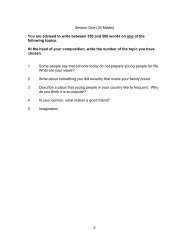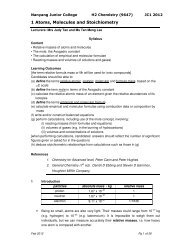Suggested Answers of BT2 Revision Package - ASKnLearn
Suggested Answers of BT2 Revision Package - ASKnLearn
Suggested Answers of BT2 Revision Package - ASKnLearn
- No tags were found...
You also want an ePaper? Increase the reach of your titles
YUMPU automatically turns print PDFs into web optimized ePapers that Google loves.
3. Exchange Rate policyDepreciation will cause exports to be cheaper in foreign currency and imports moreexpensive in domestic currency. Assuming Marshall-Lerner Condition holds, (X-M) riseleading to actual growth.Consider the appropriateness <strong>of</strong> the policyDuring weak economic climate, the exchange rate can be weakened to stimulate exports.But it has its limitations especially for small, open and export-driven economies as it causescost-push inflation and may encourage competitive depreciation, leading to negativefeedback effects. Thus, the use <strong>of</strong> exchange rate policy to stimulate actual growth is limitedin such economies. Preventing the currency from strengthening to promote exports has beensuccessful in China. If there is a global recession, such a policy is ineffective as globaldemand is low.4. Trade PolicyThe support <strong>of</strong> freer trade will expand export markets allowing for production on a largescale and goods becoming more price competitive. E.g. signing <strong>of</strong> FTAsThis is <strong>of</strong> importance for economies with small domestic markets and which are resourcescarce, for example Singapore. These economies are dependent on both imports andexports. The increase in the current account surplus will boost actual growth. However,some countries may also turn to protectionism during weak economic climate which makes itdifficult to reap the benefits from free trade policy.Supply-side policies to boost potential growth (rightward shift <strong>of</strong> LRAS)Once the economy attains full employment, further increase in real output can only occur ifthere is a rise in productive capacity in the economy (potential growth). To have sustainedeconomic growth, there must be potential growth which is promoted with supply-sidepolicies. They can be market-oriented or direct interventionist. The range <strong>of</strong> supply-sidepolicies are privatization, deregulation, liberalisation, weaken trade unions, reduction <strong>of</strong> taxrates, government providing or subsidising training programmes, government fund/subsidiesR&D, reduction <strong>of</strong> personal tax rates, building <strong>of</strong> infrastructure etc. But such policies mayhave long gestation period and may be a financial burden on the government.Consider the appropriateness <strong>of</strong> the policy.Supply-side policies are paramount and ongoing for all economies aspiring for sustainedgrowth. But supply-side policies may be more effective in bringing about sustained growthfor small and open economies given the limitations <strong>of</strong> demand management policies




